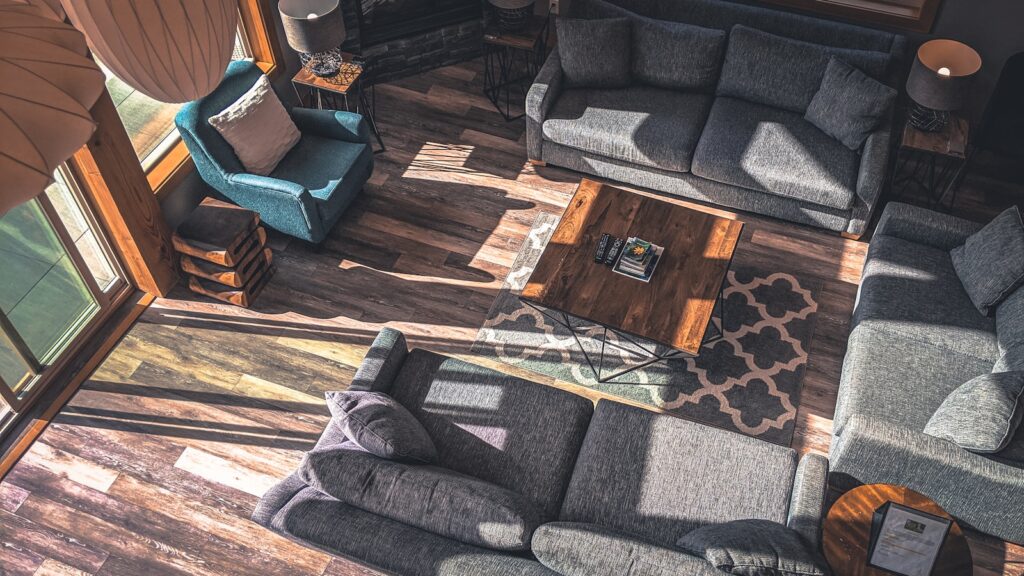MDF (Medium Density Fiberboard) is not a laminate floor. MDF is a type of engineered wood product, while laminate flooring consists of multiple layers, including a decorative layer and a wear layer, typically made of resin-infused paper.
Medium Density Fiberboard (MDF) and laminate flooring are two distinct materials commonly used in construction and interior design. While both have their unique properties and applications, it’s essential to understand the differences between them to make informed decisions in various projects.
Characteristics of MDF
Medium Density Fiberboard (MDF) is a versatile and widely used engineered wood product with distinctive characteristics that make it suitable for various applications. Understanding these features provides valuable insights into the advantages and considerations when choosing MDF for specific projects.
MDF is categorized as an engineered wood product, meaning it is manufactured from wood fibers and other additives rather than being a solid piece of natural wood.
The engineered nature of MDF allows for consistent quality and uniformity in its composition.The primary raw material in MDF is wood fibers derived from hardwood or softwood sources. These fibers are finely chopped and blended to create a homogeneous mixture.The use of wood fibers contributes to MDF’s stability and smooth surface texture.
Binding agents, including wax and resin, are added to the wood fiber mixture. These components play a crucial role in binding the fibers together during the manufacturing process.The combination of binding agents results in a dense and durable board.
One of the standout features of MDF is its exceptionally smooth surface. The absence of natural imperfections like knots or grain allows for a uniform finish.
This characteristic makes MDF an ideal choice for applications where a flawless and even surface is desired, such as in furniture and cabinetry.
MDF is highly versatile when it comes to finishes. Its smooth surface readily accepts various finishes, including paints, laminates, and veneers.Designers and manufacturers appreciate the adaptability of MDF, as it can be customized to achieve a wide range of aesthetic styles.
MDF is known for its ease of workability. It can be cut, shaped, and machined with precision using standard woodworking tools.This characteristic makes MDF a preferred choice for intricate designs and detailed carpentry work.
MDF is widely utilized in the production of furniture, ranging from cabinets and bookshelves to tables and chairs.Its smooth surface and ability to accept different finishes make MDF a favored material for creating aesthetically pleasing and functional furniture pieces.
MDF is often employed in the manufacturing of interior trim, molding, and decorative panels.Its uniform composition allows for precise detailing, making it suitable for achieving intricate architectural designs and decorative elements.
Cabinets made from MDF are popular due to the material’s stability and consistent surface. MDF cabinets can be painted or coated with various finishes to match different design preferences.The versatility of MDF in cabinet construction allows for the creation of both modern and traditional styles.

Laminate Flooring Explained
Laminate flooring is a multi-layered synthetic product designed to mimic the appearance of hardwood or stone. It typically consists of a core layer, a decorative layer, and a wear layer made of resin-infused paper.
The core layer provides stability, the decorative layer offers the desired appearance, and the wear layer ensures durability. These layers are fused through a lamination process, creating a resilient and visually appealing flooring option.
Laminate flooring is commonly used in residential and commercial spaces due to its affordability, easy installation, and ability to emulate the look of natural materials. It is also known for its resistance to scratches, stains, and fading.
Key Differences Between MDF and Laminate Flooring
Material Composition and Manufacturing Process
Medium Density Fiberboard (MDF) and laminate flooring have distinct material compositions and undergo different manufacturing processes.
MDF is primarily composed of wood fibers, wax, and resin. These raw materials are processed through high-pressure and high-temperature methods to create a dense, uniform board.
The absence of natural imperfections like knots or grain makes MDF ideal for applications where a smooth and consistent surface is desired.
Laminate flooring is a synthetic product that typically consists of multiple layers. The core layer provides stability, the decorative layer mimics the appearance of wood or stone, and the wear layer, often made of resin-infused paper, ensures durability.
The lamination process involves fusing these layers together under heat and pressure, creating a sturdy and visually appealing flooring material.
MDF is manufactured through a process of breaking down wood into fibers, combining them with wax and resin, and then compressing the mixture into sheets.
Laminate flooring undergoes a lamination process where each layer is carefully assembled and bonded under controlled conditions. This process allows for a wide range of designs and textures.
Durability and Resistance to Moisture
The durability and resistance to moisture are critical factors distinguishing MDF from laminate flooring.
MDF is known for its strength and stability, making it suitable for various applications. However, it may not withstand heavy loads as well as solid wood.
MDF is more susceptible to moisture, and prolonged exposure can lead to swelling or warping. As a result, it is generally not recommended for use in areas prone to high humidity or moisture, such as bathrooms or kitchens.
Laminate flooring is designed to be highly durable, offering resistance to scratches, dents, and stains. The wear layer protects the surface from daily wear and tear.
While laminate flooring is more resistant to moisture compared to MDF, it is essential to note that excessive water exposure can still cause damage. Some laminate products come with water-resistant features, making them suitable for areas with occasional spills.
Pros and Cons of MDF
A. Advantages of Using MDF
- Smooth and consistent surface
- Versatility in finishes
- Affordable compared to solid wood
B. Drawbacks and Limitations of MDF
- Susceptible to moisture
- Not suitable for outdoor use
- Limited load-bearing capacity
Read More
How Do You Glue Laminate To MDF?





